Tom's Guide Verdict
Defense Grid 2 offers tight strategic gameplay with a wealth of options and a story that's much better than it needs to be.
Pros
- +
Refined, varied gameplay
- +
Enjoyable cast of characters
- +
Fantastic voice acting
- +
Tons of extra challenges
Cons
- -
Punishing difficulty curve
- -
Underwhelming graphics and music
Why you can trust Tom's Guide
When the alien invasion begins, you could take up arms against a sea of troubles — or you could let technology do it instead. In Defense Grid 2, an alien invasion threatens to upend human civilization, and all that stands between the aliens and complete global domination is a bunch of colorful towers.
Defense Grid 2 does not break new ground in the tower-defense genre, but that's pretty much its worst offense. The title offers tight strategic gameplay with a wealth of options and a story that's much better than it needs to be.
Gameplay
As Defense Grid 2 is a tower-defense game, you'll spend most of your time building and upgrading towers. A standard level plays out something like this: You start with a limited number of resources and a large map. Aliens enter the map, advance toward a stash of power cores and then retreat back toward the entrance with their ill-gotten gains. The towers you construct can stop them with guns, cannons, lasers, time-distortion fields, electricity and lots of other destructive toys.
A tower-defense game in which you build defensive towers is not exactly going to rewrite the book on strategy games, but Defense Grid 2 has a number of unconventional features.
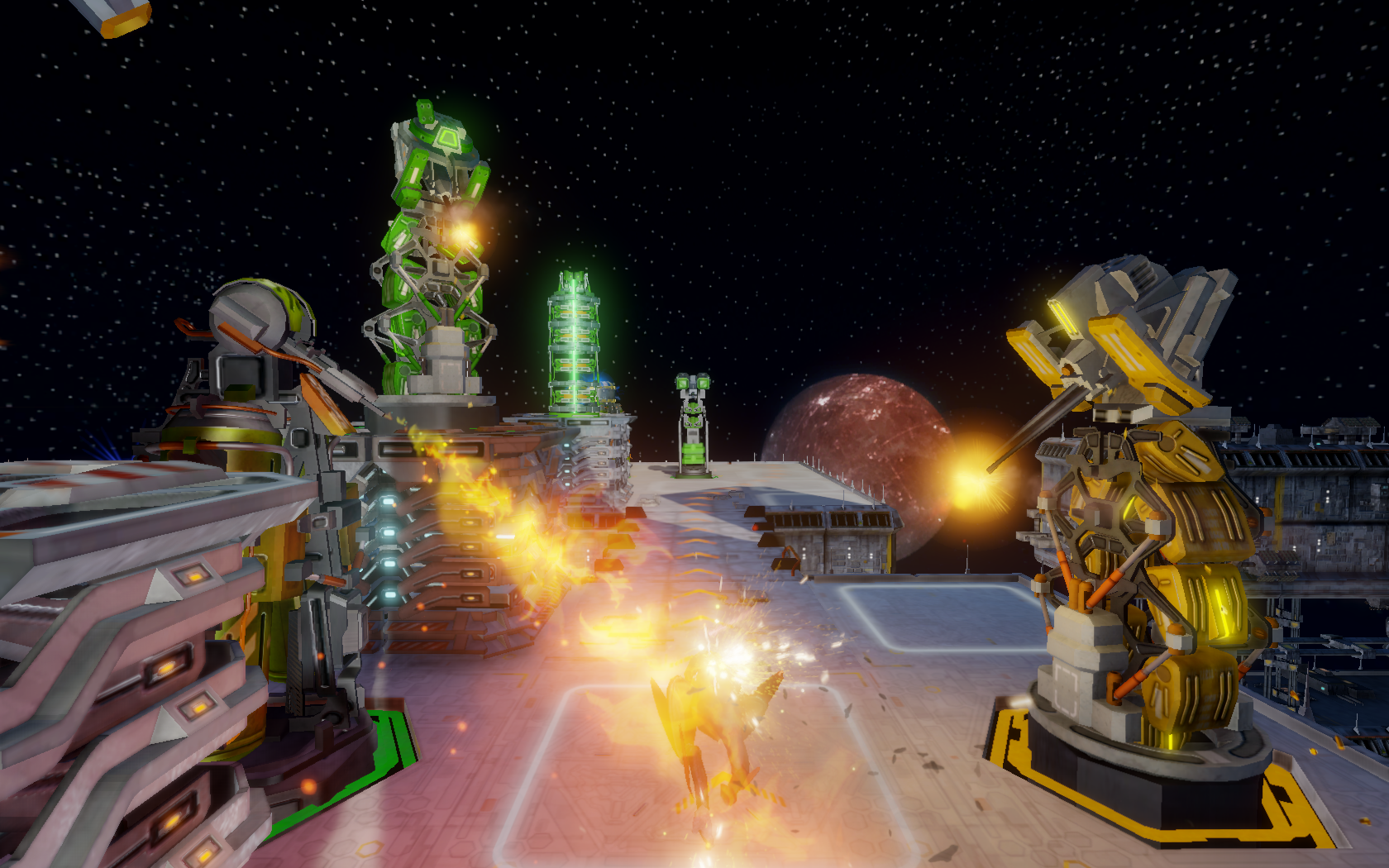
Unlike most tower-defense games, you have two chances to decimate your foes: once on the way in, and once on the way out. If you kill an alien holding a power core, you can get it back — unless the alien hands off the core to one of its alien companions before it expires.
Most important, most maps let you shape the aliens' path across the level. Aliens come in a staggering variety, including slow-moving foot soldiers, speedy racers, stealthy hunters and enormous boss units that can withstand a salvo of fully upgraded towers and carry its weight in cores. None of them can cut through towers, though, so you can construct circuitous routes lined with devastating structures that force them to zigzag through kill corridors — and if you want to survive, you'd better embrace this strategy.
Defense Grid 2 is a difficult game in which the challenge ramps up about five missions in and never scales back down. Learning where to place towers, how to direct aliens and how to make use of your limited special abilities (such as slowing down time or temporarily empowering all the towers in a given area) is often all that stands between you and losing every last one of your cores.
Hardcore(s)
Part of what makes the game so tough is that your cores influence almost every aspect of gameplay. You get resources to build and upgrade towers by killing aliens, but the cores also generate a small trickle. Stockpile a lot of resources, and you'll gain more even more quickly. Lose cores, and your resource growth slows to a crawl.
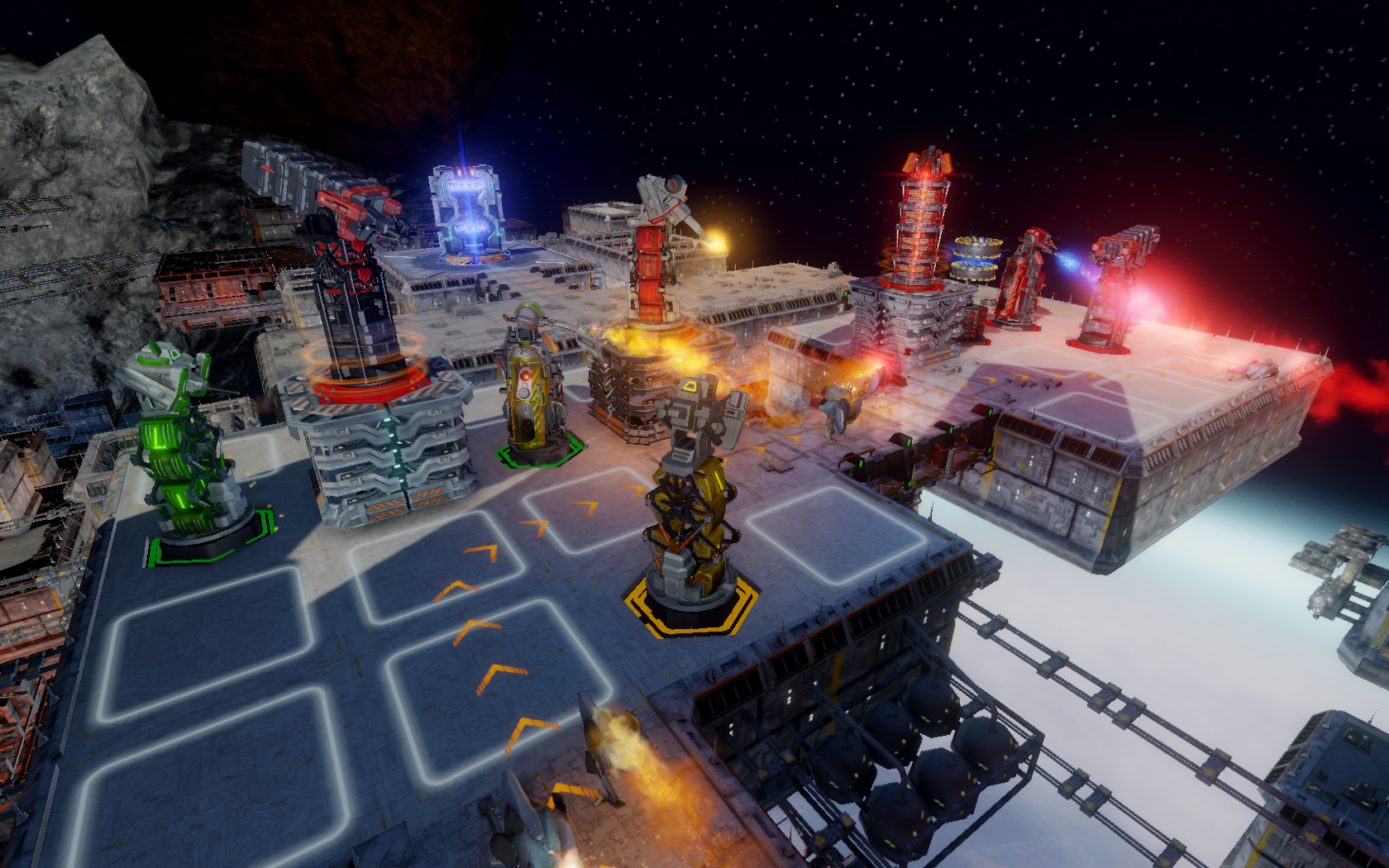
In practical terms, this often means that if you lose even a single core, the level can become exponentially harder, and you may as well just restart. As a result, the early stages of a level are often much tougher than the last few alien waves, when you can sit back and watch your fully upgraded towers make mincemeat out of the invading force.
The game's difficulty curve is part of what makes it so satisfying to succeed. However, the prospect of struggling with a single alien bottleneck for half an hour before chucking the whole plan and restarting a level from scratch often made me want to pick up a different game instead.
In addition to the standard story campaign, each map has a number of alternative challenges, as well as both competitive and cooperative multiplayer modes. All of these features work just fine and will appeal to the "beat my high score" crowd, but the plot missions are probably the best part of the game.
Story
All across the galaxy, human colonies are under attack by a diverse assortment of aliens in pursuit of a religious ideal known as the Void. Players take control of the Commander and his or her AI companion, the raspberry-loving General Fletcher, as they travel from settlement to settlement, activating "defense grids" to protect humanity and the precious power cores.
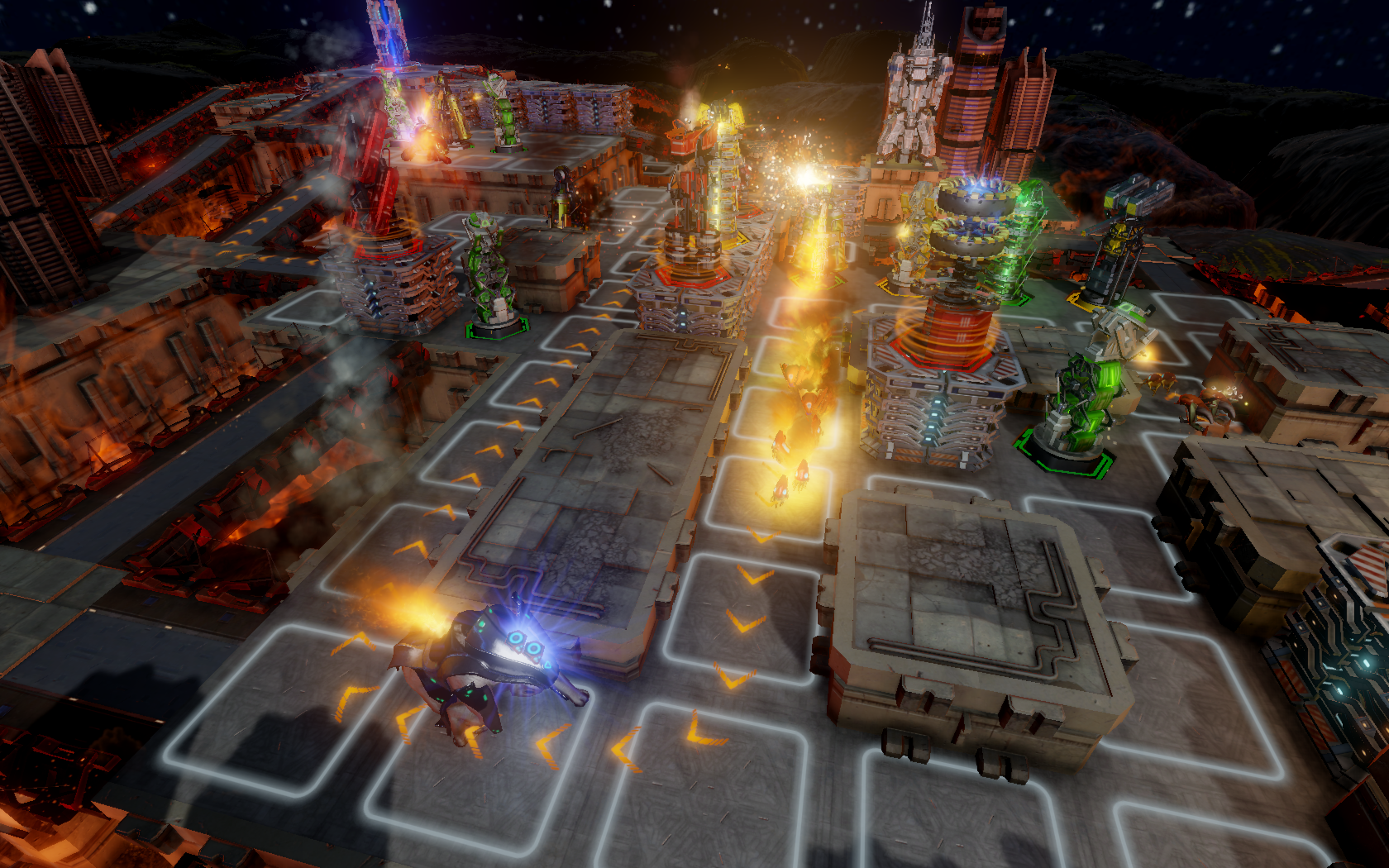
If this sounds a lot like the plot of the first Defense Grid, that's because it's the same basic setup. To the game's credit, though, Defense Grid 2 builds on the story of the original without retreading the exact same ground. As Fletcher and the Commander travel, they amass a motley crew of AI companions and investigate an alien phenomenon that plays havoc with their personalities.
Defense Grid 2 is a feast for the fingers rather than the eyes.
As storylines go, the one in Defense Grid 2 is still there mostly to get players from one map to the next. Still, the affable cast of characters, combined with some interesting alien narration during loading screens, gives a sense of connectivity, and the banter between the various AIs helps make missions feel like more than just mad scrambles to construct defenses.
Graphics and Art
If there's one area where Defense Grid 2 fails to deliver, it's in the visuals department. Even playing the PC version on the highest resolution with all the settings turned up, the game still looks a little jagged and indistinct, especially during the sweeping panoramas that introduce each mission. Granted, the graphical niceties don't matter too much when the ideal way to control any map is from a bird's-eye view, but Defense Grid 2 is a feast for the fingers rather than the eyes.
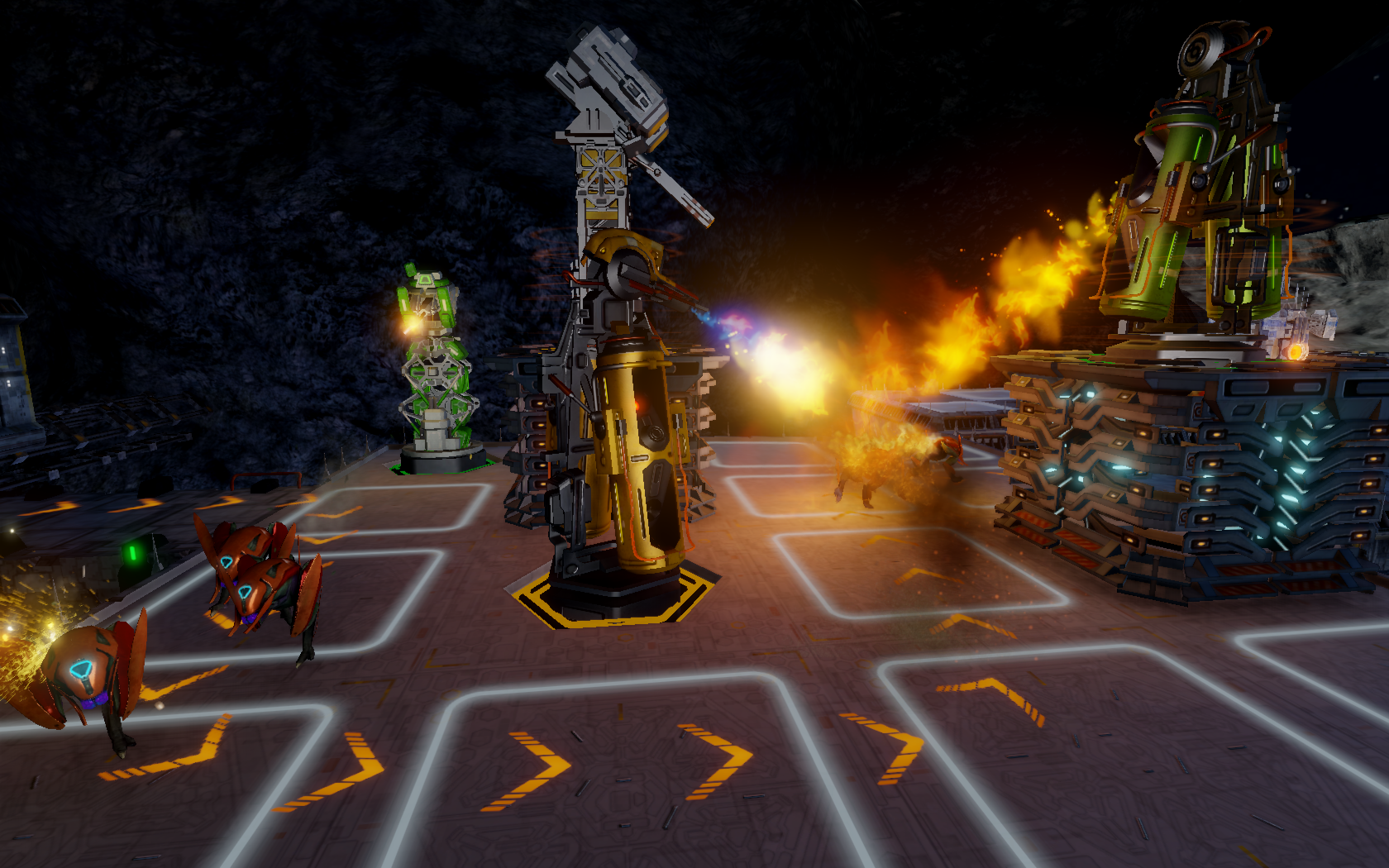
Similarly, the art style veers a bit to the uninspired side. There's a large variety of aliens to conquer, but unless you zoom in to examine them, most of them look like so much cannon fodder. Likewise, most of the maps are big mechanical grids without too much by way of decoration. You'll be too busy managing towers to notice the backgrounds anyway, but levels distinguish themselves by design rather than looks.
Music and Sound
There's not much to say about the music or sound effects in Defense Grid 2. They're there, but aside from an occasional stirring victory fanfare or burst of cannon fire, you probably won't even notice them.
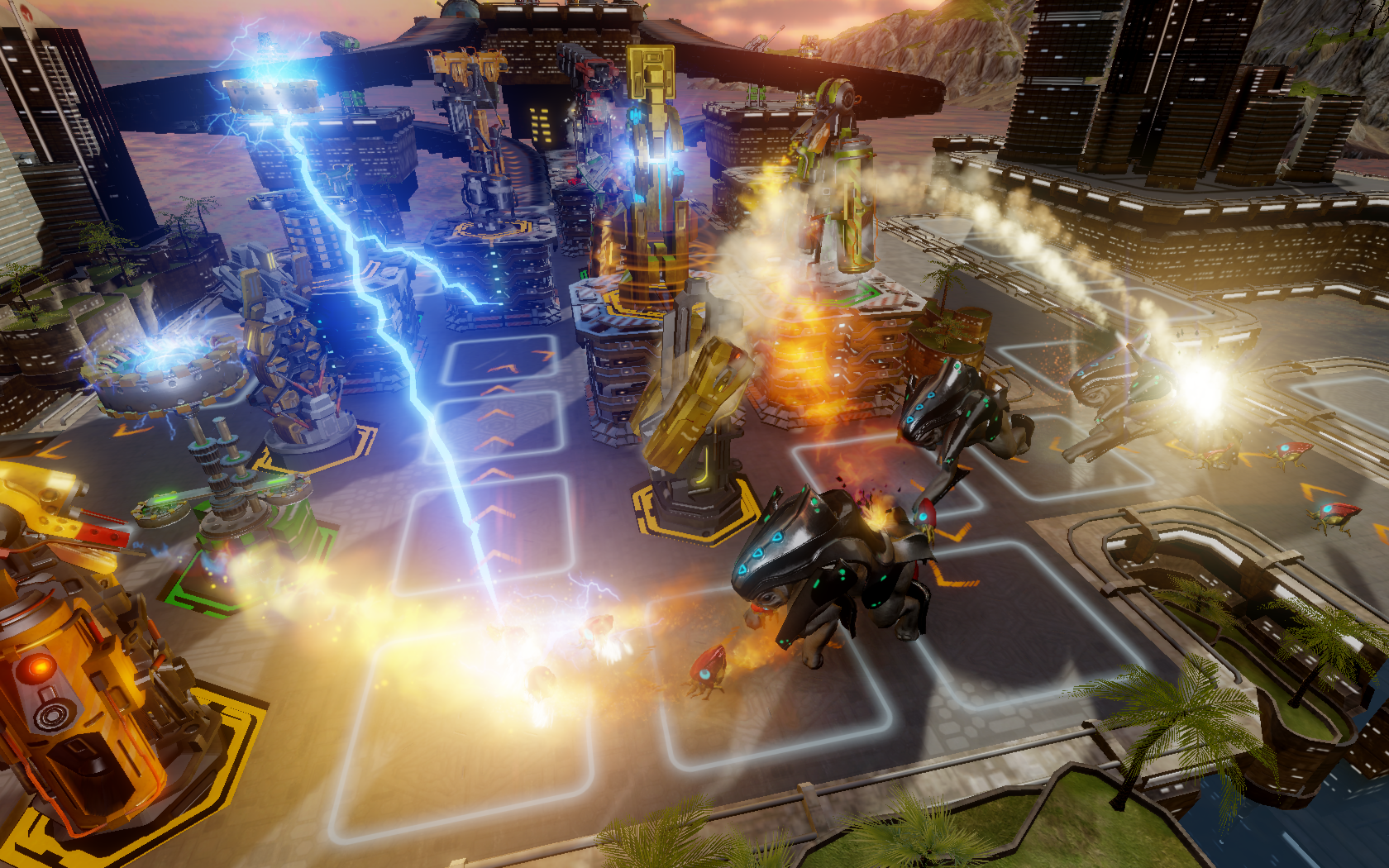
The voice acting, on the other hand, turns a cast of pleasant characters into memorable ones. With talent ranging from Firefly's Alan Tudyk (Commander Simon) to Mass Effect's Jennifer Hale (Advisor Zacara), each character has a distinct voice, mannerisms and affectations. Listening to Fletcher's tangents (via veteran voice actor Jim Ward) about raspberry lollipops is as delightful as hearing Commander Simon's frenzied pleas to save a civilian populace.
MORE: 15 Fun Facebook Games
Fans of the first game may be disappointed, however, that Ming-Na Wen did not reprise her role as General Cai. Agents of S.H.I.E.L.D., as it turns out, is a demanding mistress.
Bottom Line
Given how easy it is to churn out a tower-defense game, slap it on Steam and call it a day, the level of detail and care that went into Defense Grid 2 is both evident and refreshing. The game is flawed, however: The difficulty curve can feel more punishing than encouraging, and the game is not much to look at.
If you can endure these small trade-offs, though, Defense Grid 2 will test your reflexes, your strategic thinking and your urban planning skills. After all, why get your hands dirty killing aliens when towers do it for you?
Publisher: 505 Games
Developer: Hidden Path Entertainment
Genre: Strategy
Price: $24.99
Release Date: 9/23/14
Platforms: PC, PS4, Xbox One
Requirements
OS: Windows Vista, Windows 7, Windows 8.0, Windows 8.1
Processor: Dual core CPU 2.0Ghz or faster
Memory: 3 GB RAM
Graphics: DirectX 10 video card with shader
Hard Drive: 2 GB available space
| Our Favorite Gaming Hardware: |
| Best Gaming Mice |
| Best Gaming Desktops |
| Best Gaming Keyboards |
Marshall Honorof is a senior editor for Tom's Guide, overseeing the site's coverage of gaming hardware and software. He comes from a science writing background, having studied paleomammalogy, biological anthropology, and the history of science and technology. After hours, you can find him practicing taekwondo or doing deep dives on classic sci-fi.
-
Braindizzle Defense grid 2 has no sort of increased resource generation based on current resources. You should probably play the game before writing a review on it.Reply


